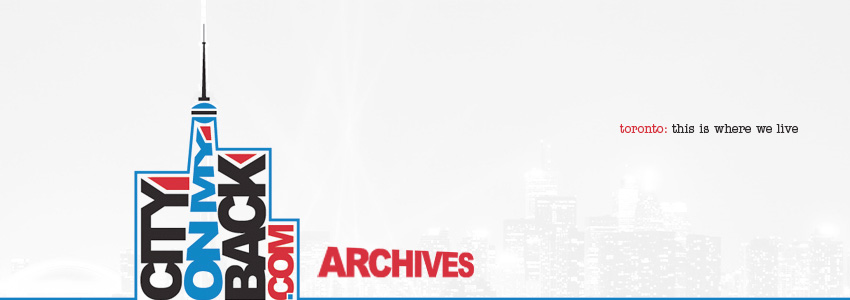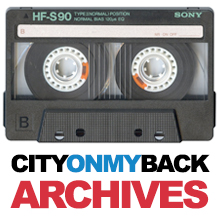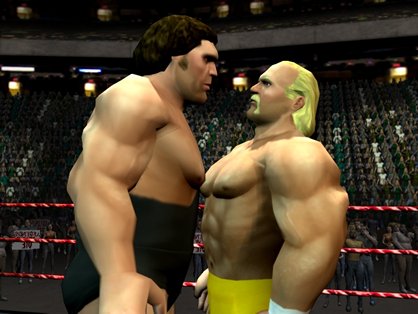EDITORIAL: An Essay On A Better Future For Canadian Hip-Hop (by Chris Shaban)
Okay, things at footnotes* are moving well in 20T0, so I thought I’d throw in a little intermission this week to bring you a little ol skool flavour. We’ve been enjoying an increasing number of new readers daily at blog.farbeyond.ca and we’re very happy for that. Makes me think it’s time for a twist. I know I have mentioned this many times before, but back in the day I used to write a few articles for some different publications under various names between the years of 2003 – 2007 . To this day a couple of those pieces have helped shape the way the urban landscape in Canada is currently viewed. But you know, I never needed the millions of dollars and G4’s that would have come with the recognition , I’m just happy about where we are now . Feel free to count this as my ‘What The Dog Saw’ . This little ditty was written in the Spring of 2006 , right around the time I first felt the itch to get back into the business. I had just sold my share of SafeBridge and spent the next 3 months figuring out what to do. Below is the results of the research that I conducted regarding what I felt was the staleness in the industry . After writing this, I knew the time was not right for me to get back in. Lastly, I made a decision NOT to alter anything in this piece, so my style may not be as, shall we say, strong, as maybe you’ve come to enjoy, so please bare that in mind. Very important to note that the footnotes added are BRAND NEW, so we’re mixing it up a little bit, but I think you’ll have more fun this way. Anywho, nuff yapping… dig in and enjoy.
I know, I know but believe me, the pic makes sense when you read the piece (lol!)… Actually reading any of these pieces at www.farbeyond.ca is also recommended to get the full pop-up experience.
Hit the jump for the ‘full Shabby’!
Previously: EDITORIAL: Famous – The Building Of A Brand Pt. I (By Chris Shaban)
Spring Cleaning – Competition is King
An Essay on a Better Future for Canadian Hip-Hop By: Huntar Bogaesi
Love is in the air, do dodo do dodo, Love is in the air. Spring is a beautiful thing isn’t it? Of course it is, so I can skip the one thousand different reasons why it is wonderful. The season does, however, always bring about one dark cloud in my mind, believe it or not. That my, dear friends, is Spring Cleaning. Ah yes, the underwear you find beneath your bed that isn’t yours (that takes you back to that night you can’t remember) . The dust pile that is so thick, you truly thought your dresser was grey. You know what I’m sayin’; it just gleams with excitement doesn’t it? Well, there is only one hard truth about Spring Cleaning: Nobody likes it, but everybody knows that it has to get done .
That analogy brings me to the point of this paper. As an observer of Canadian hip-hop since its inception, my feeling is that it’s about time that we had our own Spring Cleaning. Not just a started today, forgotten tomorrow cleaning; I’m suggesting one that would turn the whole industry on its collective ear. Something that can weed out the real from the fake, the winners from the losers, the money makers from the…well just someone to make money ! Yes, it’s been thought of before, and no it can’t properly be started on a MySpace page , but work with me here.
First I am going to trace out some facts about our Canadian hip-hop scene to help better illustrate our need for change. These are NOT my opinion and I am not saying I agree with them; these are just facts:
1) Canadian Urban Music has not experienced viable success in this country, or in any other country . On the complete opposite end of the spectrum, almost every other genre of music that our country has produced has not only succeeded globally, but in many cases, became the industry leader. If you’ve got your thinking cap on, it kinda makes you go hmmmm, doesn’t it? Fact, not opinion.
2) Urban radio has failed quite badly in Canada: Aside from Flow 93.5 in Toronto holding tight to its reign, every other ‘urban’ radio station (or rhythmic urban) in Canada has bolted away from their original format like it was the ugly girl at the dance looking for love . Here is a list of stations that abandoned their initial idea of how to market their station since 2003:
KISS 92 (Toronto)
Beat 94.5 (Vancouver)
Beat 91.5 (Kitchener)
Vibe 98.5 (Calgary)
Hot 89.9 (Ottawa)
I am sure that there are some that I have left out, but you get the picture. Point : Most of these stations are still thriving and doing quite well in their markets; I am not taking that away from them or knocking their current success. The reference was just to the fact that the position each of these stations has taken on the format is different from where it was originally. Flow is Canada’s only TRUE urban station, like it or not. Fact, not opinion. Let’s take a rabbit trail to dig a little deeper into this.
The question has been where did we go wrong? Did these stations leave the format because they wanted to prove a point? Did they want to put a halt on a profitable business? Did they wanted to spend a considerable chunk of change in advertising, promotion, licensing, among other things to laugh as it failed? Or did they want to show everyone that almost all regions in Canada couldn’t support that type of station? I think all of those ideas are a little silly, and I am not here to say that anyone agrees with them. But with that all being said, you still need to ask yourself, then why did they make the change?
I am of the belief that it failed for two reasons.
The first is a lack of education for the listeners on good urban music in the same way we learned about other genres in years past (ie MuchMusic, AM radio, record labels etc) . This is critically important. Unfortunately there are only so many teachers that are educated enough to spread across the world’s largest country. Oh do we miss Master T on television !
The second is the 35% Canadian Content, also known as ‘CanCon’ , rule that hovers over these stations. What’s wrong with that rule? Well, unless you’re Brian Adams, there’s nothing wrong with it . The law does, however, lead me into my third point. Based on all the above truths this third one should be considered fact; however for the sake of the essay, I will call it my opinion.
3) Canadian Urban Music, for the most part, is of lower quality than it should be to succeed . Why else – when the Board of Directors of the aforementioned radio stations decided to lighten the urban load on its programmers – did you hear the CanCon time filled with Sum 41, Avril Lavigne and Bedouin Soundclash’s ‘When the Night Feels my Song’ every hour last year? It’s as if a heavy weight was lifted off their collective shoulders. There are only so many Canadian urban songs you can play from 4:30 to 6:30 in the morning before you start compromising your integrity as a licensed radio station. The government imposed camel clutch known as CanCon was more realistic now – not removed – just more realistic. Why? Because there were more options available to play. Some might even say better options to play . Think that’s too harsh a statement? Reflect on this point: Do you think that these stations changed the urban format because no one wanted to hear 50 Cent? Eminem? Mariah Carey? Snoop Dogg? Usher? Busta Rhymes? TI? Mary J Blige? Of course not; those artists are still getting played everyday on radio and video stations across Canada just as much as they were before. So what are we left with?
Okay, take a second and put on your businessperson hat, and work with me . It makes no sense that all these radio stations would change a commercially and financially successful format, agreed ? Hence, the numerous changes would lead us to believe that, for the most part, the format was not as successful as was anticipated, right ? Now if a radio station is divided up as 35% Canadian then the other 65% must be Non-Canadian, you follow me? And these same stations are still playing all the same urban music that they played before from Non-Canadian artists, aren’t they ? Then that leaves us with one conclusion: The CanCon was the reason for the change, and thus of lower quality .
Now with me not being employed by a Canadian radio station, I understand that there will still be some additional inner workings that contribute to these changes that I have not addressed here. Nothing is 100% one way. But as the old adage goes, where there’s smoke, there’s fire, and the Canadian urban music scene my friends, is a 4 Alarm Blaze. Finally, there is one point that I don’t really like hearing: Canada doesn’t have enough ‘urban centres’ (read: hoods) to make the music viable. Folks, hoods breed the music; but we all know that burbs buy it, period . That walks us nicely into my final point:
4) Canadian labels do not sign urban artists . Please see point number 3 for reasons why. Remember, they are a business folks, and if it was proved that there was money to be made in the Canadian market, your thinking cap is off if you believe that they wouldn’t go after it. They still have to answer to shareholders…it truly is all about the Robert Borden’s baby .
There is another side to the coin of course; Labels are not totally off the hook when it comes to blame here. It is still on their shoulders to take risks and to educate fans. But the fact of the matter is, for the most part, it’s not that the genre is unproven or untested; it’s that it’s proven and tested – badly.
On the real – I may just be explaining it differently – but this is stuff that we already know, right? So let’s get cleaning because this isn’t an interesting essay until you start throwing more opinion around, so here it is. I believe that a lot of the ills that causes our industry to suffer stem from a lack of competition. Check the history: It is the same pill that hurt the WWE (see WWF) when it scooped up WCW and ECW. It’s the same pain that provided Canada with some of the worst home phone service in the world via Bell. And it’s the same consistent pain that has been one the road blocks in Karl Marx’s original idea of Communism. Competition is integral, if not necessary, for successful growth .
So I thought to myself, what better way to stimulate growth and creativity than some healthy competition. Not a bad idea if I do say so myself! We know that there is ‘competition’ out there among artists; but unless you read blogs and message boards – usually in reference to artists you are unfamiliar with – you would think that everyone in the business are great friends. Where’s the Invisible Hand at ? That being said, the first area that needs to get addressed is the buddy-buddy infrastructure that we perpetuate here; it is clearly not working for us . We’re too passive aggressive folks. Let’s have a talented artist (or artists) step out and send some shockwaves around the industry. Shoot at all the crabs in the bucket, so to speak. Yes, I am referring to the battle track.
For starters, it is important that we are careful how this is done. One, this can’t be a staged cry for attention, much like Jin’s ‘F*ck Jay-Z’ joint that is making its way around the internet (I know he’s trying to prove a point, but come on ). It needs to be a researched, polished, well produced assault on only those artists that you deem to have talent. It also doesn’t need to be violent, or cause problems when artists interact, but it does have to be truthful .
As well, artists should not be concerned with mentioning other artists by name. Too often we hear a scathing dis track aimed at a nameless emcee. Clearly there was a motivation when that song was written – So let us know who it is for crying out loud. For the record, as it sits right now, only Jay-Z can get away with summarizing the nameless dudes with lines like: ‘And all you other cats throwin’ shots at Jigga, you only get half a bar…’ He felt that he didn’t necessarily need to help out Jayo Felony’s career by mentioning his name. And as a quick reminder, no one here is Jay-Z .
This could be just the kick in the pants that we need here to shake up the staleness. But hey, that’s just my opinion .
Okay F3’s, I hope you liked that little trip down memory lane. I will insert these bad boys again from time to time, so let me know if you’re down. Next Friday, back to business, the fourth and final installment of ‘Famous – The Building of a Brand’… Scream at me…



The Canadian urban music industry has always been bias. It’s been on a selfish type of situation with those who know who within. This is the major problem even beyond the problem that CanCon only allows the ones who are within that circle of the earlier 90’s urban music scene to those who use Payola factors on determining who gets spins to who doesn’t.
In the end it all comes down to the money factors. Mostly urban radio stations who had personalities and deejays that only make $40k per year seem to want to pocket that extra payola money of $500 – 1000 here and there.
Many out there only want to ignore what’s obviously within a urban industry that hasn’t changed it’s thinking since the late 80’s back in Maestro Fresh Wes days. And it’s not going to get better any time soon because CD sales are difficult to establish these days.
Comment by Kris — October 14, 2010 @ 1:12 am